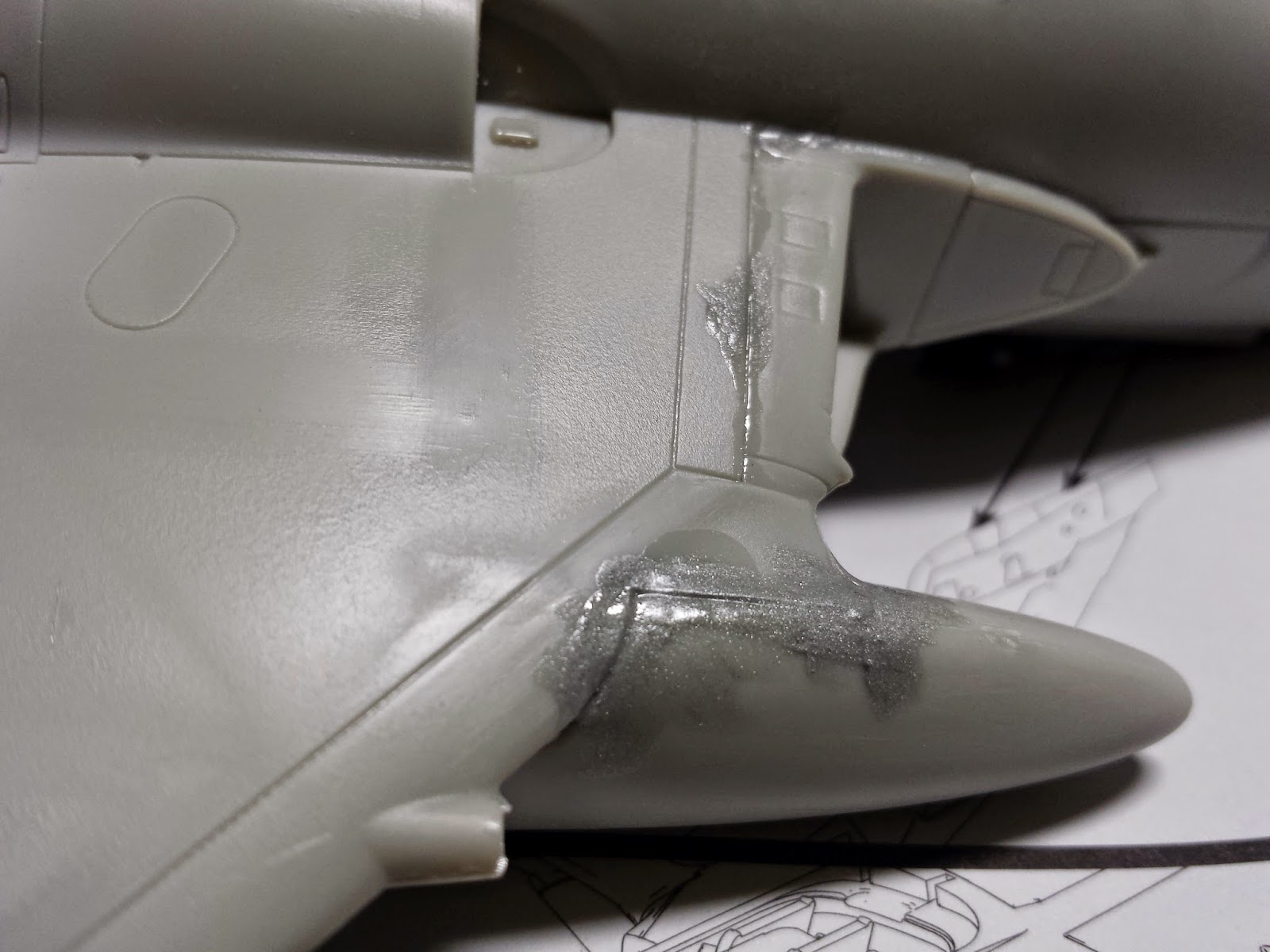After all that sanding and filling, it has to be down to the time of reckoning, putting back the lost details!
The areas that chips do occur are painted silver. I found that in comparing various types silvers out there, the most robust one seemed to me to be GAIA.
After the silver, protection as robust as it is over coated over the silver, another Gaia EX03 Gloss varnish. Then two layers of AK Chipping is don over the surfaces, which turned out to be a disaster that I will elaborate later.
The medium grey areas of the paint were don with Mr. Colour 36 and highlighted with the new RAF colours from Tamiya, the XF80 with some GAIA gloss added to increase the flow and Mr. Colour leveling thinner is used to prevent dusting build up in perpendicular surfaces.
Disaster struck, with the Tamiya tape one, to try to doe the invasion stripes, the paint came right off the surface even after 48 hours of curing time. Such thing do not occur when I use normal Revlon hairspray or Mr. Colour Silicone Barrier. So, I have to redo the paintwork a few times over again to get it back in shape.
The RAF Roundels are painted and masked again to centre the red circle. Red is sprayed over in thin coats till we get a sheen with some varitones.
The sequence of colours are, blue, red, followed by red.
There is some spillage on some edges, not something we cannot solve.
The roundels are masked again so that we can reverse the spillage by coating the ares with the base coat colour.
Now the bottom roundels are finally done, the rest of the plane is masked to get the invasions stripes in on the bottom surfaces.
Whites are used to spray on the areas that has been prepainted with Mr. Colour 35. Taking care not to get onto the rivet and panel lines so that we have somewhat a preshading effect on the colours.
The Black goes on and later highlights in Mr. Colour 36 Grey.
Bottom finally done. Now the masks of the greys has to be removed from the top surfaces so that new masks for greens can be placed on appropriately.
What happened was nothing less than a disaster, even after 5 days of drying time! Meaning, this AK product is relegated to my WW2 Winter tanks only! No more use of it for aircraft.
Masking my greens. Blue tack is used and larger areas and invasion stripes edges are masked with Tamiya tape.
The wing surfaces of the ammunition area, gun access and side of fuselage were totally stripped of paint by the masking tape! 2 days of work down the drain! It has to be remasked and repainted.
Finally, after much struggle from 8pm to 6am on Friday night till saturday morning, I got the invasion stripes on at long last.
The decals went on after I have a slight coat of Gaia gloss over the whole model. I do not like total gloss as it makes the decals not as homogeneous as the rest of the paintwork. Some guys leveled the whole plane gloss, then gloss over the decals before matting them back again for weathering. Thereafter, all the details will be so shallow that you can only get panel lines and all the nice rivets are gone.
Tail fin anchor point was done with 36 gauge brass wire coiled round a 0.3mm drill bit. This is buried in place using CA Glue.
The front anchor point is the boom mast. I drilled this across with a 0.3mm drill.
The rest of the wing decals and fuselage decals were added, almost 100 of them on the upper surfaces!
The upper surfaces are washed with Tamiya Panel Line Accentuators in black and grey. This is later stripped mainly by Tamiya Enamel Thinners.
Cleaning in progress, using a no. 4 Ashley brush and Tamiya enamel thinner in a broom sweeping mode to brush the washed mainly to the lines and details while taking our most of it using a paper surface.
Chips AHOY, as the paint has become really hard, like what I wished it to be in the first place. I have to put a wet cotton wool on areas I want to attack, about 6 hours of waiting will do. The paint is then chipped by using tweezers.












































































